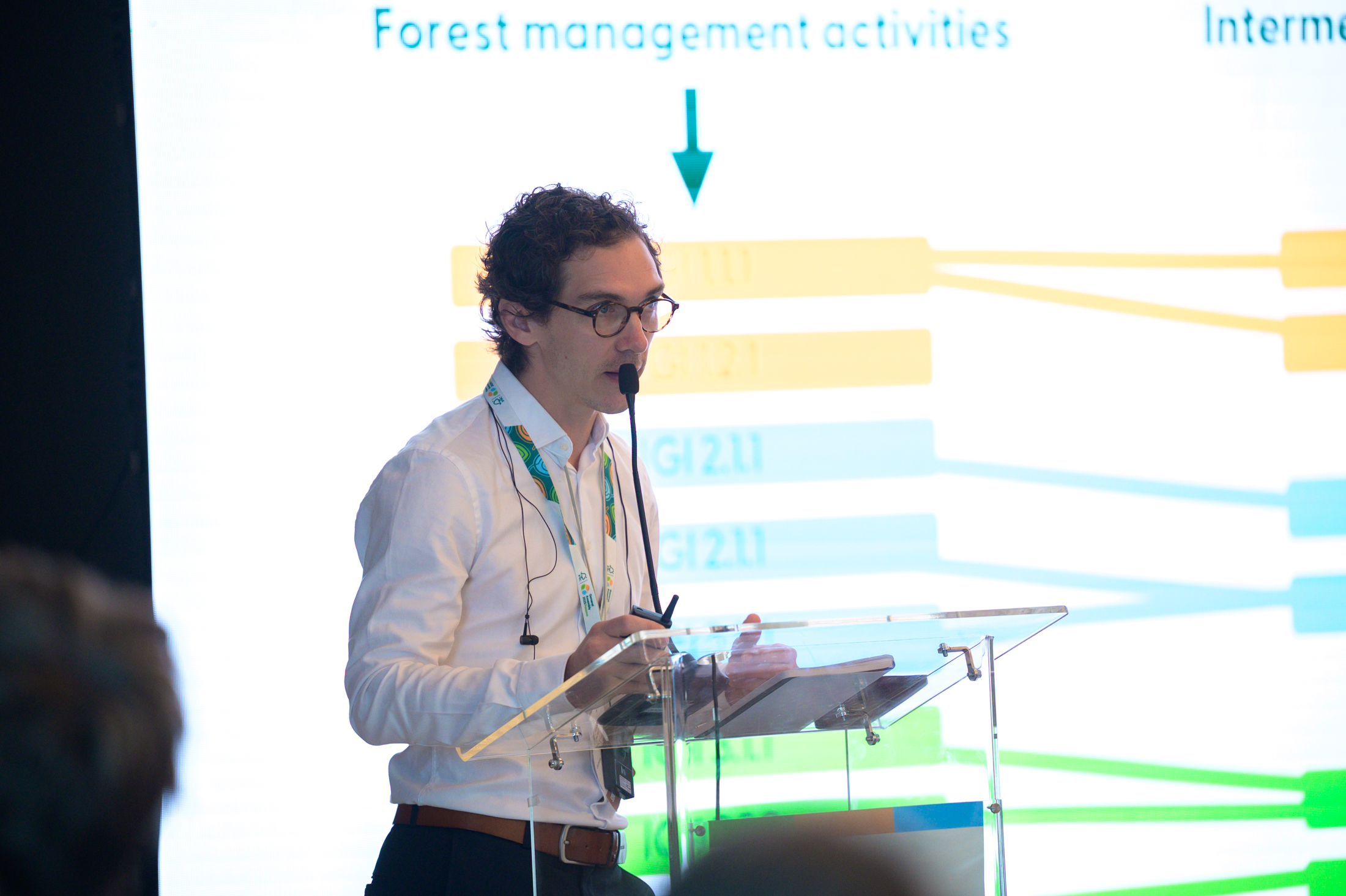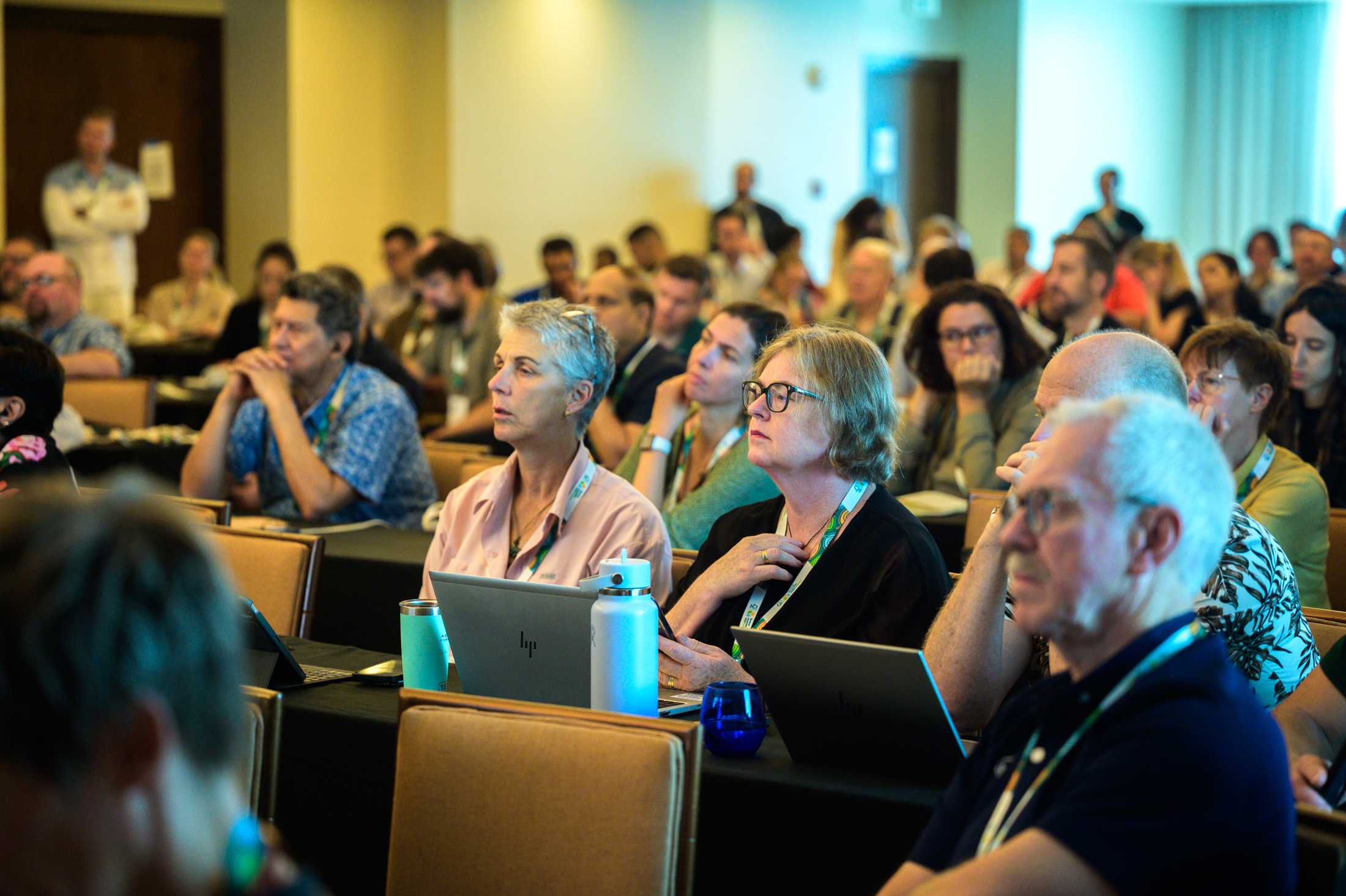As FSC looks to the future of forest stewardship, discussions increasingly mention streamlining. But what does this really mean? At the FSC General Assembly, experts and members explored how focusing on outcome orientation – as an element to support streamlining – can redefine responsible forest management.
To open the discussion, Rod Taylor, Global Director of the Forests Program at the World Resources Institute, emphasized the need for results-based approaches that enable flexibility, innovation, and adaptation in forest management. Technology such as satellite monitoring and AI-driven data systems can support this transition and bring costs down.
“This kind of revolution would be able to have hard, objective monitoring that would be accessible to everyone,” Rod said. He cautioned that FSC must harness these tools while aligning to stay relevant in a changing climate.
What is outcome orientation?
Franck Trolliet, Programme Manager for Monitoring and Evaluation at FSC, explained what outcome orientation means: putting more focus toward the achievement and demonstration of intended outcomes – desired results – during standard development and implementation.
Currently, most FSC forest management standards are practice-based but are not designed to quantify outcomes or track progress. Global trends reflect the climate and biodiversity crises and focus on transparency and accountability – and outcome orientation can help respond to these trends.
How to implement outcome orientation in FSC standards
Franck shared FSC’s process so far to develop proposals for outcome orientation in both FSC’s Principles and Criteria and Forest Stewardship Standards, defining a causal chain toward FSC’s vision, establishing preconditions, and defining outcomes of resilient forests, social well-being, and economic viability. Indicators will still maintain yes/no auditable requirements.
The audience responded to what the global set of intended outcomes of forest stewardship should be – with responses including relevance for climate and biodiversity, scaled up innovation, alignment with agri-food systems transformation, and incorporation of Indigenous Peoples concept of good living to improve their quality of life while sustainably managing the forest with their ancestral knowledge.
Franck then shared the proposed changes to the standards that are undergoing consultation. For the Principles & Criteria, each principle would represent a broad outcome, and each criterion with a specific, concrete outcome contributing to it, creating a more coherent, accessible, and adaptable global framework.
For the National Forest Stewardship Standards, the proposal suggests identification of three to five priority outcomes for each country, most relevant to its context. National standard developers would then define indicators, monitoring methods, and data collection systems in collaboration with local experts, ensuring results are evidence-based, cost-effective, and aligned with FSC’s global goals while remaining locally meaningful.
A practical example in Finland and Sweden
To bring this conceptual discussion to the ground, Luontoa consultant Lauri Moisander shared how outcome monitoring can be practically applied in FSC-certified forests in Finland and Sweden, focusing on biodiversity indicators such as deadwood abundance and fire-dependent species. The study demonstrated that outcome monitoring is feasible using tools like remote sensing and environmental DNA and showed positive ecological results from FSC practices.
“We can conclude that outcome monitoring has proven to be feasible. The methods that we've used for testing are all replicable and scalable across various settings,” Lauri said.
He also emphasized the need to establish clear ecological thresholds, baseline data, and continuous monitoring systems, as well as clearly defining roles and responsibilities to prevent added complexity in certification.
How can FSC improve this process?
Participants joined the discussion, raised questions about costs and feasibility – especially for smallholders and countries lacking advanced technology – and about maintaining simplicity and accessibility in FSC language. Several speakers cautioned against discarding valuable lessons from existing standards and emphasized the need to build on what works rather than reinventing processes.
Broader reflections included ensuring that outcome orientation does not allow the ends to justify the means, stressing the importance of procedural rights and safeguards for communities living in the forest. Taking a risk-based approach prompted discussion about whose perspective defines ‘risk.’ Finally, participants underscored that outcome monitoring must stay grounded in reality and inclusivity, not just technical ambition.
How to engage
Jannicka Murphy, Policy Outreach Manager at FSC, explained how members and other stakeholders can further get involved in the discussion on outcome orientation of FSC standards, including an Open House during the General Assembly, and beyond.
FSC invites all members and stakeholders to shape this evolution. Join the consultations on Principles and Criteria, Indicators, and Forest Management Standards: https://consultation-platform.fsc.org/
Read the green paper on outcome orientation at the PCI Hub: https://pci.fsc.org/pages/d6f95b39e4284f0e9b51e3b9e1a77e8d



